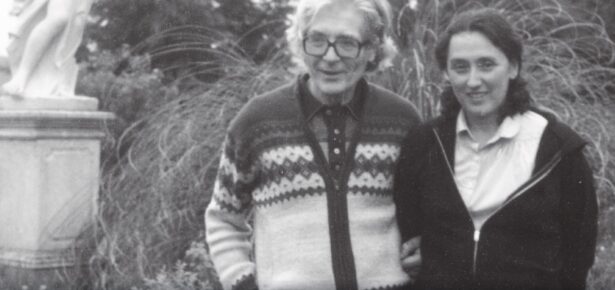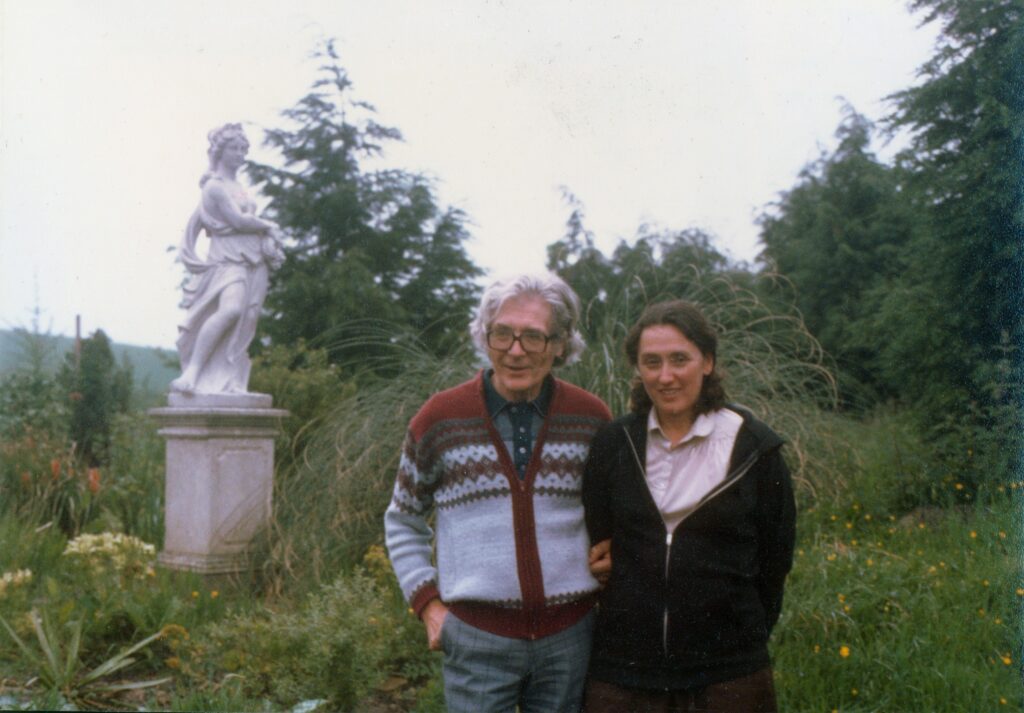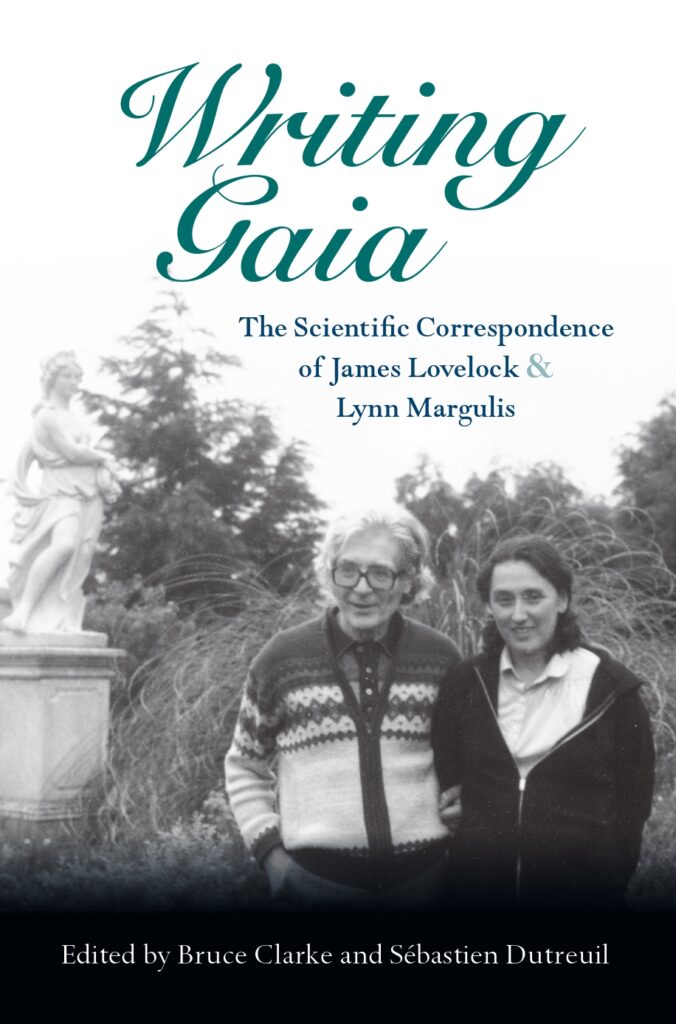
With a two-page letter to the editor of the scientific journal Atmospheric Environment published in 1972, the English scientist and inventor James Lovelock (1919-2022) introduced Gaia into the professional literature. Here was a newly recognized hypothetical entity, constituted at the planetary scale by the sum of living beings and the environments with which they interact. Earlier that same year Lovelock and the American evolutionary theorist Lynn Margulis (1938-2011) began to develop an important series of full-length co-authored scientific papers on the Gaia hypothesis.
Lovelock and Margulis suggested that over geological time, contrary to received ideas regarding life’s passivity in the face of environmental change, life on Earth has had a major role in both producing and regulating its own environment. From their home bases in atmospheric chemistry and microbiology, their writing collaboration during the 1970s spanned multiple disciplines and set the course for the gradual progress of Gaia from initial controversy to a broad reception in the Earth and environmental sciences. Their collaboration also initiated a steady correspondence, along with a deep professional and personal relationship, that continued for the next four decades.
Years prior to these developments, James Lovelock quit his salaried position as a researcher at the UK’s National Institute for Medical Research in 1961 and, after remarkable contributions in analytical chemistry, gas chromatography, cryobiology, cell biochemistry, and other fields, established himself as a scientific entrepreneur, consulting for private corporations such as Shell and Hewlett Packard and scientific institutions such as NASA’s Jet Propulsion Laboratory and the US National Oceanic and Atmospheric Administration. Thanks to one of his inventions, the electron capture detector (ECD), in 1972 he was also the first to measure the chlorofluorocarbons determined later that decade to be responsible for the depletion of ozone in the stratosphere.

Thus, had he not become known for the Gaia hypothesis, Lovelock would still have been recognized in the history of science for the invention of the ECD. Similarly, had Lynn Margulis not become famous for her contributions to and support of Gaian science, she would still have been renowned in her own right as a passionate and prescient advocate for the central importance of symbiosis for the biosphere altogether. Her leading role in the renewal and development within evolutionary biology of the theory regarding the endosymbiotic origin of the eukaryotic cell, eventually confirmed by molecular evidence, would still be an exemplary accomplishment. And her strong personality would still be legendary.
Thanks to their decades of mutual effort, the idea of Gaia itself has developed into an ecological and environmental worldview, a broad philosophy of nature underpinning significant contemporary representations of Earth and life in the scientific, political, and cultural debates over global climate change and broader environmental issues. Refined by Lovelock, Margulis, and a growing international cohort of scientific colleagues, Gaia has now grown into a theory inspiring major scientific research programs such as Earth system science (ESS), and strongly affecting related disciplines such as geochemistry, Earth history, ecology, complexity sciences, and astrobiology. Moreover, in the last two decades, social scientists and humanities scholars as well have found in Gaia fruitful and challenging new perspectives by which to confront climate change and the advent of the Anthropocene era.
Writing Gaia: The Scientific Correspondence of James Lovelock and Lynn Margulis
presents a full and annotated collection of the Lovelock-Margulis correspondence, totaling 287 discrete items dating from 1970 to 2007. As the astrobiologist David Grinspoon notes in his endorsement for the volume, it makes for “a riveting intellectual journey, spiced with gossip, intellectual feuds, and occasional moments of touching intimacy.” This invaluable register of an enduring scientific partnership shows them both in an instructive light, doing the work of doing science together. Scholars and other interested readers of this volume will be able to study the final record of a lifelong exchange of correspondence between major researchers who are also two of the most extraordinary scientific individuals of the last century.
The idea for this volume originated in 2011, when the American literature and science scholar Bruce Clarke visited Margulis’s lab at the University of Massachusetts in Amherst, only to find that she would be delayed for a few days in returning from a trip to Europe. “That’s OK,” she emailed back, or words to that effect: “you can use my office in the meantime, and you’re welcome to look at anything in there.” Before long he came across filing cabinets full of professional correspondence, and within one of them, a thick folder of Lovelock’s letters, which he summarily marched to the Xerox machine. The idea of joining both sides of the correspondence soon presented itself, but Lovelock’s papers turned out to be in flux at that moment. However, by 2017 his library and lab had been acquired by the Science Museum headquartered in South Kensington, London. It was around this time that Clarke learned about the work that French philosopher and historian of science Sébastien Dutreuil was doing on Lovelock’s archives at the Science Museum for his doctoral thesis on the history of Gaia.
That is how our own collaboration began, and in the summer of 2018, we gathered in London to begin piecing the Lovelock-Margulis correspondence together. By August 2019 we had assembled the bulk of that correspondence and begun working on annotations and an encompassing editorial narrative. Now we met at University of Exeter to attend the conference celebrating Lovelock’s one hundredth birthday, “The Future of Global Systems Thinking,” and to draft a prospectus for our volume. A few months later Cambridge University Press accepted our proposal and initiated the complicated negotiations with the estates of Lovelock and Margulis needed to bring such a mass of unpublished and proprietary materials into print.
Gaia is sometimes presented, even by Margulis, as having been elaborated largely by Lovelock himself. Others consider that the developed state of Gaia should be understood as the product of their close collaboration, especially in its first decade. The correspondence provides a range of evidence critical for the determination of this issue. Writing Gaia brings forward decisive elements for understanding their respective roles in the history of Gaia as a scientific idea. It highlights how their individual backgrounds and training, social and cultural commitments, intellectual temperaments, and geographical and institutional spaces, were complementary for the elaboration, dissemination, and reception of Gaia, but also, occasionally in conflict. Indeed, their disciplinary and stylistic differences, as well as the divergence between their overarching motivations, also led to disagreements and tensions, and ultimately to a gradual subsiding of their writing collaboration during the 1980s. All the same, the correspondence we have been able to recover shows that their conversations and parallel efforts on Gaia’s behalf continued and remained vibrant and revelatory until within a few years of Margulis’s untimely death in 2011.
The correspondence between James Lovelock and Lynn Margulis tells the story of these developments from the inside. We have been able to establish a record of their correspondence giving a well-balanced portrait of the beginnings and the progress of their scientific and personal association. The correspondence shows from moment to moment how their partnership proved decisive for the effective development and dissemination of the Gaia hypothesis. Taken singly and together, their ideas have transformed significant parts of the Earth and life sciences as well as contemporary conceptions of nature and the Earth at large.
The international meeting held at the University of Exeter for Lovelock’s centenary in 2019 provided one more testimony to the diversity of current scholarly interest in Gaia. Attendees included natural scientists—climatologists, biologists, oceanographers, astrophysicists, astrobiologists, and ecologists—as well as science writers, journalists, historians, literary scholars, sociologists, economists, and philosophers. This volume is addressed most directly to academic workers and their advanced students and other professional observers who have taken up the Gaia debate. We hope that it will also be of interest to historians, philosophers, and sociologists of science and to scholars of literature and science and cultural studies, as well as to adventurous members of the wider public who may have followed several decades of books and articles by Lovelock or Margulis and who are interested in a more detailed knowledge of their scientific lives and contributions.

Title : Writing Gaia: The Scientific Correspondence of James Lovelock and Lynn Margulis
Author : Bruce Clarke and Sébastien Dutreuil
ISBN : 9781108833097
Latest Comments
Have your say!